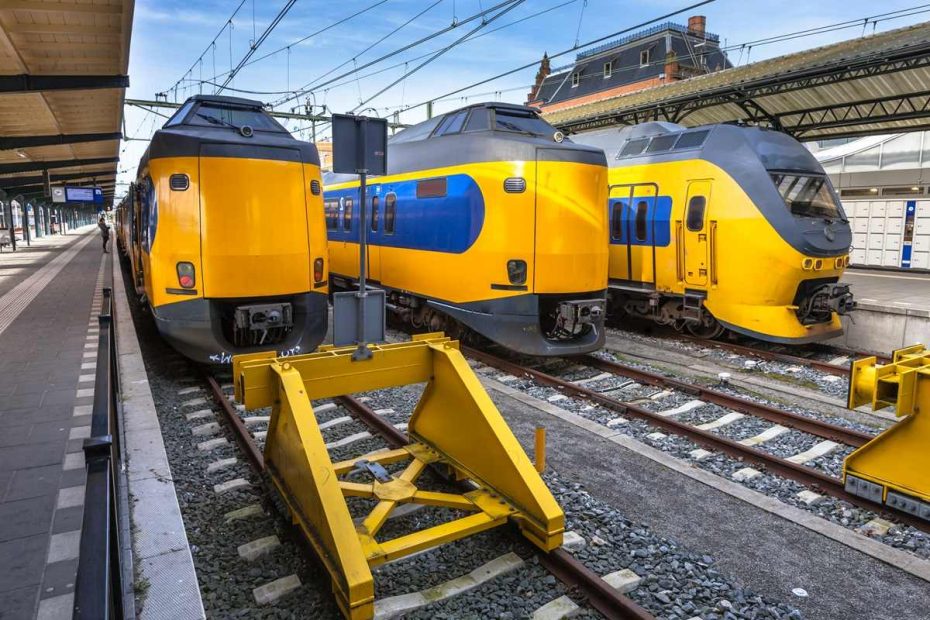Trains are important transportation around the world, but their management requires complex and reliable technologies. One of the most important safety systems is the braking system. When a train is in motion, it contains a significant amount of kinetic energy that must be removed in order to stop. The simplest way to do this is to convert energy into heat through friction. In most trains, this is achieved by air brakes, which use compressed air to apply pressure to the brake pads or discs. In this article we will take a detailed look at how the air brake works and why it is so important to the safety and efficiency of trains.
Основни принципи на въздушната спирачка Управление на спирачната система от машиниста Задействане и освобождаване на спирачките Аварийно спиране и защита Допълнителни характеристики и усъвършенствания Задействане на спирачките във всеки вагон Контрол и сигурност Заключение
Basic principles of the air brake
The air brake is a standard, safe braking system used on trains around the world. The basic principle of this system is based on the physical properties of compressed air. Compressed air is stored in a main tank under pressure between 7 and 10 bar. This air is distributed along the length of the train through a main air pipe (main air duct) which is connected to auxiliary tanks in each car. The air in these tanks is used to actuate the brakes on each car, the flow being controlled by a valve, also called a distributor (DISTRIBUTOR VALVE).
Control of the braking system by the driver
The operator controls the brakes via an operator crane in the cab, which has several positions.
Applying and releasing the brakes
When the operator places the valve (crane-driver) in the “Braking” position, the pressure in the air pipe decreases, which causes the valve in the triple valve to move and open the connection between the auxiliary reservoir and the brake cylinder. As a result, air enters the cylinder and presses the brake blocks against the wheels, which slows and stops the train. The brakes remain applied until the reservoir and cylinder pressures equalize.
Emergency stop and protection
Most air brake systems also have an “Emergency Stop” (Emergency Stop), which provides quick and powerful braking in case of need. In an emergency stop, the pressure in the air pipe is rapidly released, causing all the brakes on the train to apply immediately. This is an important feature that prevents accidents, especially at high speed or dangerous conditions.
Additional features and enhancements
Over the years, the air brake has undergone a number of improvements. For example, some systems are equipped with distributors that offer more sophisticated brake control. They allow partial release as well as automatic regulation of brake pressure according to the weight of the wagons. There are also twin-tube systems that provide faster charging of auxiliary tanks, reducing the risk of running out of air on long descents.
Applying the brakes in each car
Each car in the train has at least one brake cylinder which is actuated by the movement of the piston inside it. This movement is transmitted through a system of links (bars) to the brake blocks that press the wheels. Modern systems often use disc brakes, which work on the same principle as those on cars.
Control and security
The air brake is a reliable and safe system, thanks to its built-in accident prevention mechanisms. For example, a loss of pressure in the brake line automatically activates the brakes, making the system fail-safe. This means that the train will stop if the pipes are damaged or separated.
The air suspension system is a vital part of railway safety and continues to be subject to innovation and improvement to meet the challenges of modern transport. It is an example of successful technology that has stood the test of time and is an indispensable part of the daily operation of trains around the world.
The braking system of trains is one of the most important components for ensuring safety in railway transport. The effectiveness and reliability of this system depends on the knowledge and experience of the people who build and maintain it.
In addition to technical skills, professionals in this field must exhibit a high level of responsibility and attention to detail. A small mistake in design or installation can have serious consequences. That’s why experience and professional training are critical to the successful performance of this job. Only through a combination of theoretical knowledge and practical experience can these professionals ensure flawless functioning of braking systems and, thus, contribute to the safety of millions of passengers and cargo around the world.
Conclusion
The air brake is one of the most enduring technologies in rail transport, having proven its effectiveness and reliability for more than 130 years. Despite numerous improvements, the basic principles of operation remain unchanged. Stopping a train is a complex process that requires precise control and an understanding of the laws of physics. Operators must possess considerable skill and experience to operate this system effectively and safely.
